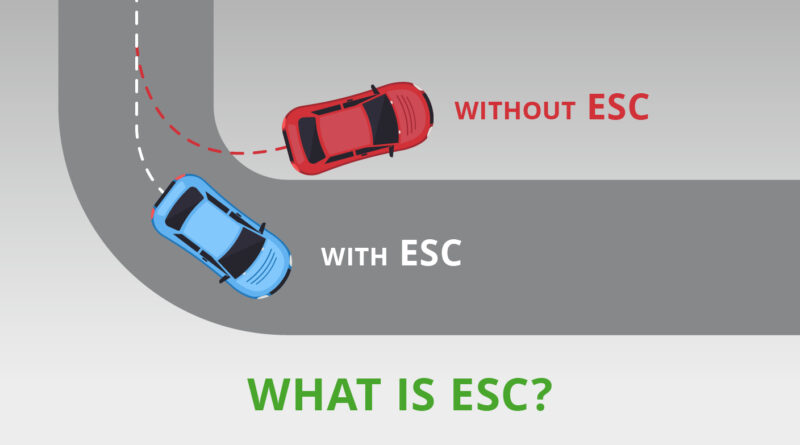What is Electronic Stability Control ESC?
Electronic Stability Control (ESC) is an advanced safety feature designed to improve a vehicle’s stability by detecting and reducing skidding. It is an essential technology that helps drivers maintain control of their cars during extreme steering manoeuvres, thereby preventing accidents and enhancing overall road safety.
How Does ESC Work?
ESC systems work by constantly monitoring the driver’s steering input and the vehicle’s actual path. Here’s a breakdown of how ESC functions:
- Detection: The system uses sensors to monitor various parameters, including wheel speed, steering angle, and lateral acceleration. These sensors detect any discrepancy between the driver’s intended direction and the vehicle’s actual movement.
- Assessment: If the system detects that the vehicle is not following the intended path, such as when it starts to skid or understeer, ESC intervenes to help correct the course.
- Correction: ESC selectively applies the brakes to individual wheels and can reduce engine power if necessary. By doing so, it helps steer the vehicle back onto the correct path, preventing loss of control.
Benefits of ESC
The implementation of ESC in vehicles offers numerous safety benefits:
- Accident Prevention: ESC significantly reduces the risk of skidding and rollovers, particularly in adverse driving conditions such as wet, icy, or uneven roads.
- Enhanced Control: Drivers can maintain better control of their vehicles during emergency maneuvers, such as sudden swerving to avoid obstacles.
- Increased Confidence: Knowing that ESC is active can boost driver confidence, allowing for safer and more relaxed driving.
- Reduced Severity of Accidents: In situations where accidents are unavoidable, ESC can help minimize the severity of crashes by keeping the vehicle stable and preventing secondary collisions.
Types of Situations Where ESC is Most Effective
ESC is particularly beneficial in various driving scenarios, including:
- Sharp Turns: When taking sharp turns at high speeds, ESC helps prevent understeer (where the car turns less than desired) and oversteer (where the car turns more than desired).
- Slippery Roads: On wet, icy, or loose surfaces, ESC helps maintain traction and prevent skidding.
- Emergency Maneuvers: In sudden evasive actions, such as swerving to avoid a collision, ESC helps keep the vehicle stable and on the intended path.
ESC and Legislation
Recognizing the life-saving potential of ESC, many countries have made it a mandatory feature in new vehicles. For example:
- United States: The National Highway Traffic Safety Administration (NHTSA) mandated ESC in all new passenger vehicles starting from 2012.
- European Union: ESC became mandatory for all new cars sold in the EU from 2014.
- Australia: ESC has been required in all new cars since 2013.
Conclusion
Electronic Stability Control (ESC) is a critical safety technology that enhances vehicle stability and prevents accidents by helping drivers maintain control in challenging driving conditions. With its ability to detect and correct skidding, ESC plays a crucial role in modern automotive safety.
As more countries mandate ESC in new vehicles, its presence on the roads continues to grow, making driving safer for everyone. Understanding and appreciating the function of ESC is essential for drivers who prioritize safety and seek to benefit from the latest advancements in automotive technology.
Buying a used VW. Buying used vauxhall, BMW, Jaguar, Ford, Volvo, Range rover, Bentley, Aston Martin, Porsche, Ferrari, Lamborghini, Maserati, Hyundai, Tesla, Honda, Pagani

